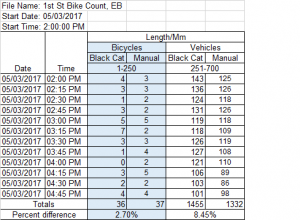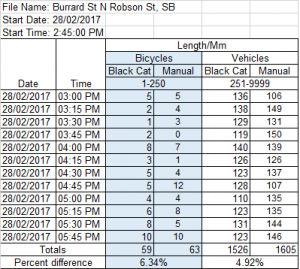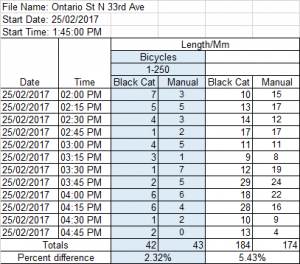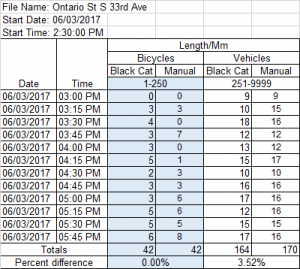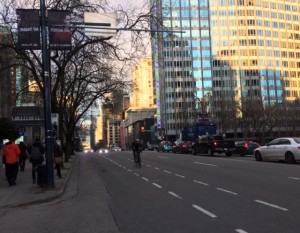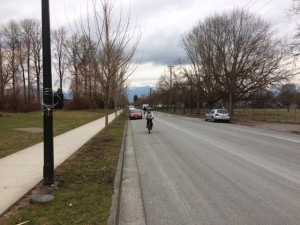The following is a study of the effectiveness of the Black Cat Generation 2 Radar detector for recording bicycles. As evidenced in my previous entry, these units accurately record vehicle lengths;
http://www.ca-traffic.com/en/wp-content/uploads/2014/08/Black-Cat-Radar-Technical-Papers.pdf
During traffic count installations, I also noticed they were consistently recording bicycles! The purpose of this article is two-fold:
- To measure the accuracy of the Black Cat Generation 2 sensor for recording bicycles.
- To identify installation considerations.
To determine the effectiveness of the Black Cat traffic detector to record bicycles, I tested them in a variety of situations, and calibrated the equipment against manual counts, recorded on the Portable Studies platform. For bicycles on roadways there are two general layouts: bike lanes or shared roadways. I chose to study two of each type of location. The results are as follows:
The average error of 2.84% is an excellent result!
Also, from my studies I identified certain installation guidelines which must be followed. For roads with bike lanes, shadowing, where a vehicle and bicycle pass at exactly the same time, is a common problem. To minimize this occurrence, installations should be in free flowing areas. As the Black Cat Radar detector is designed to record in calibrated lanes, they are ideally suited to this type of application. For shared roadways, it is important to keep bicycles within the calibrated lanes, even though lanes may not be marked. Installing in locations where traffic can be funneled, by objects such as curbs or parked cars, helps direct bicycles into lanes. This also helps minimize clustering. While the Black Cat Radar detector is designed to count in lanes, the Black Cat Cycle counter is specifically designed to record bicycles in clusters;
http://www.ca-traffic.com/en/ca-solutions/black-cat-outstation-platform/black-cat-radar-cycle-detection/
In combination, these two sensors can be used to accurately survey any urban bicycle network!

